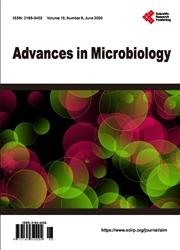Analysis of Prevalent Leptospira Serovar in Different Animals of South Gujarat Region during the Year of 2020
引用次数: 0
Abstract
Background & Aims : Leptospirosis is a bacterial zoonotic disease transmitted through contact among animals that are harboring leptospira. Knowledge of prevalent leptospira in a particular animal of a particular geographical area is essential to understand the epizootiology of disease as well as the linkage between circulation of serovars in animals and humans, and to apply appropriate control measures. Materials & Methods : For this retrospective analytic study, animal samples from different districts of south Gujarat region, India received in Microbiology department of Government Medical College (GMC), Surat, Gujarat region, India, during the year of 2020 for Microscopic Agglutination Test (MAT) of leptospira serovars included in the study. Results of MAT which was already performed using 12 different serovars were analysed to know prevent serovars in a particular animal. Qualtitative data was analysed using frequency and percentage. Results : Out of 1406 animal's samples, 151 (11%) were positive from animals like cow, buffalo, bullock, and goat. More prevalent serovars in cows were Ictrohemorrahiae (22%), hardjo (19%), patoc (17%), and pyrogen (16%). In buffalos, patoc (58%) and hardjo (27%) were found. In bullocks, hardjo (50%) and in goats, automonalis (50%), australis (22%) and patoc (14%) were found as prevent serovars. Conclusion : Different prevent serovars has been observed in different animals from different districts of south Gujarat region, which will be helpful to trace the source of infection in human, to apply control measures, to know epizootiology of disease, and for developing strategies in future during vaccine development with emphasizing more on the prevalent serovars.2020年南古吉拉特邦地区不同动物流行钩端螺旋体血清型分析
背景与目的:钩端螺旋体病是一种细菌性人畜共患疾病,通过携带钩端螺旋病毒的动物之间的接触传播。了解特定地理区域特定动物中流行的钩端螺旋体,对于了解疾病的流行病学以及动物和人类血清型循环之间的联系,并采取适当的控制措施至关重要。材料和方法:在这项回顾性分析研究中,来自印度古吉拉特邦南部不同地区的动物样本于2020年在印度古吉拉特邦苏拉特政府医学院微生物学系接受了研究中包括的钩端螺旋体血清型的显微镜凝集试验(MAT)。分析了已经使用12种不同血清型进行的MAT的结果,以了解在特定动物中预防血清型。使用频率和百分比对定性数据进行分析。结果:在1406份动物样本中,151份(11%)来自牛、水牛、公牛和山羊等动物。奶牛中更常见的血清型是Ictrohemorrahiae(22%)、hardjo(19%)、patoc(17%)和热原(16%)。在水牛中,发现了patoc(58%)和hardjo(27%)。在公牛中,hardjo(50%)和山羊中,automonalis(50%)、australis(22%)和patoc(14%)被发现可以预防血清变异。结论:在古吉拉特邦南部不同地区的不同动物身上观察到了不同的预防血清型,这将有助于追踪人类感染源,采取控制措施,了解疾病的流行病学,并有助于在未来的疫苗开发中制定策略,更多地关注流行的血清型。
本文章由计算机程序翻译,如有差异,请以英文原文为准。
求助全文
约1分钟内获得全文
求助全文

 求助内容:
求助内容: 应助结果提醒方式:
应助结果提醒方式:


